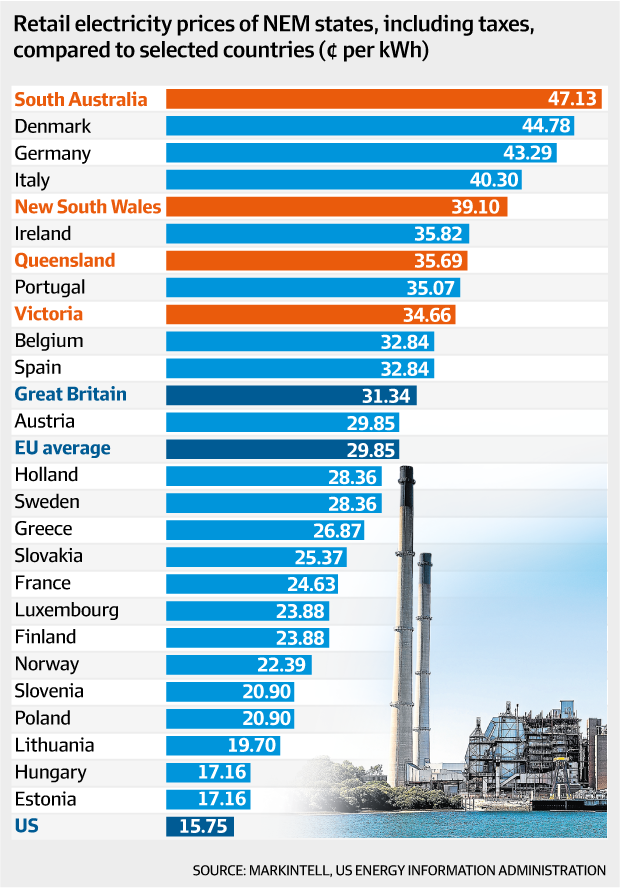High Electricity Prices Cripple Australian Manufacturers, Is Minnesota Next?
Companies throughout Australia are reconsidering whether they will indeed bring manufacturing jobs back from China after experiencing enormous increases in electricity prices as a result of the closure of an enormous coal-fired power plant and government regulations that mandate the use of “green power.”
For example, according to the Financial Review:
Hardware manufacturer Alchin Long Group in Sydney’s west has had to agree to a near-doubling of its electricity price, said Graham Lee, national operations manager. The price of the new two-year contract from Origin Energy has surged from $55.30 per megawatt-hour to $109.70 .
Aluminium scrap processor Weston Aluminium, which uses about $600,000 of electricity a month, pays $57/MWh on its existing contract coming up to expiry and is hearing prices of $150 in the market, said managing director Garbis Simonian.
“We cannot reduce [our electricity demand]. If the electricity and gas triple there’s going to be a lot of people in trouble,” he said.
The chief executive of Australia’s largest aluminium smelter said they had to curtail production in recent months because of the spike in electricity prices which was “crippling” the business.
BlueScope Steel and Incitec Pivot have both been hit by soaring power prices, while Rio Tinto’s Boyne Smelters has cut back output and about 100 jobs.
These are just a handful of examples showing how high energy prices harm heavy industry, and we will see similar quotes coming from Minnesota manufacturers and miners if we keep upping the amount of intermittent, and expensive renewables on the grid.
There are a lot of parallels between Australia and Minnesota.
Australia used to have some of the lowest power prices in the world, and Minnesota’s energy prices used to be 20 percent below the national average, but both the Land Down Under and the Land of 10,000 Lakes have seen electricity prices skyrocket as they closed down large, efficient coal-fired power plants and mandated the use of renewables, primarily wind.
Australia has been even more aggressive than Minnesota, however, and now South Australia has the highest electricity prices in the world. The chart below shows electricity prices (in Australian dollars) for selected countries. You’ll notice the U.S. average is approximately 1/3 the cost of South Australian electricity.

Minnesota industry has already seen their electricity prices rise substantially, increasing 33.58 percent faster than the national average since 2007. Rising electricity costs make it harder for Minnesota firms to compete both globally and nationally, and it makes it harder for factories and mines to provide family supporting jobs.
We have to ask ourselves, is it worth it? Minnesota’s electricity demand has been flat since 2006, which means we don’t need a single new power plant to provide us with the electricity we depend on every single day. This means that the billions of dollars spent on wind energy ($15 billion, to be exact), represents a massive opportunity cost that could been spent more productively throughout the economy.
Smart people have been duped into thinking that wind and solar are essentially free sources of energy, but we know this is not the case. Instead, wind and solar are expensive hood ornaments on top of a power grid that is kept running by coal, nuclear, and natural gas.
As electricity becomes more expensive, energy intensive manufacturing jobs are more likely to move to other states or other countries, and Minnesota mines are more likely to sit idle as we import our raw materials from other nations.
Hopefully people begin to realize they’ve been tricked, and they begin to understand the negative consequences wind and solar have had on Minnesota families and businesses.